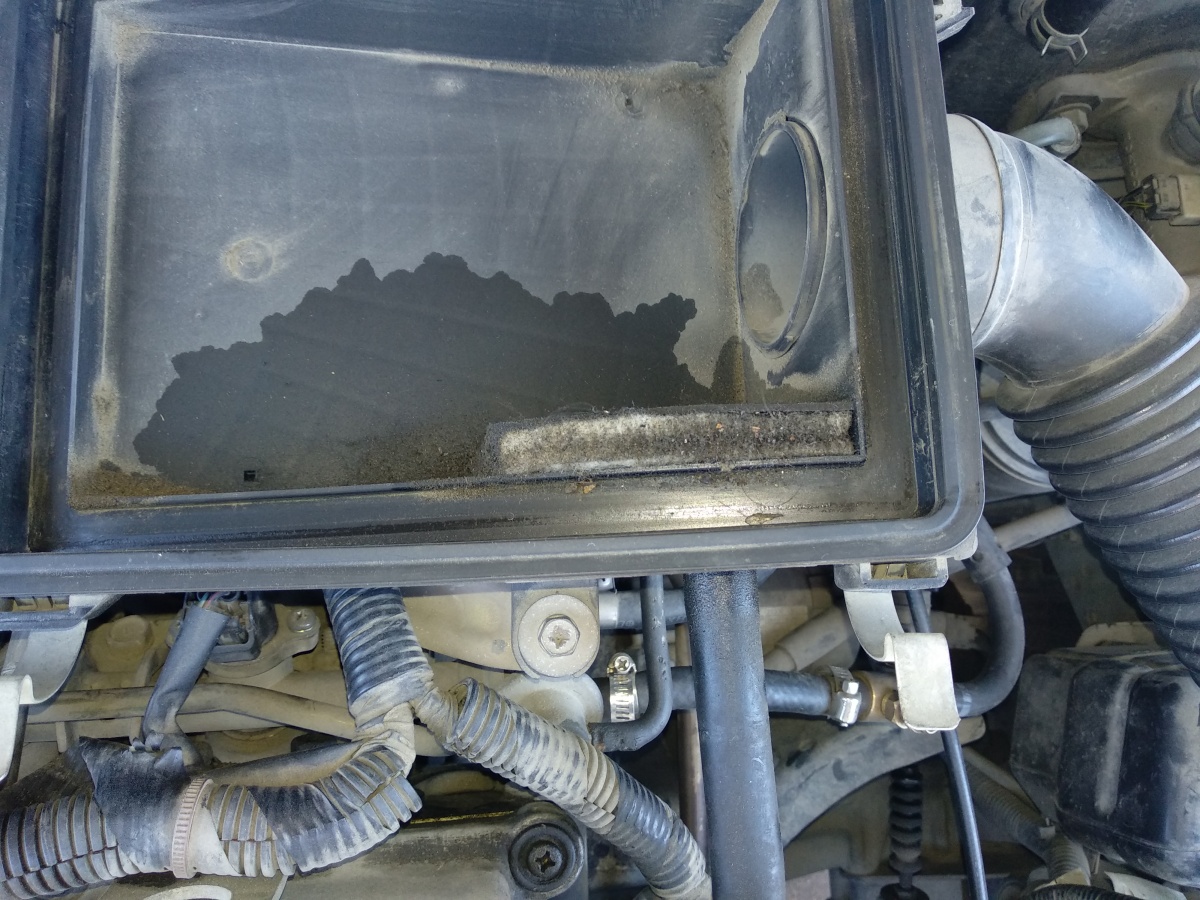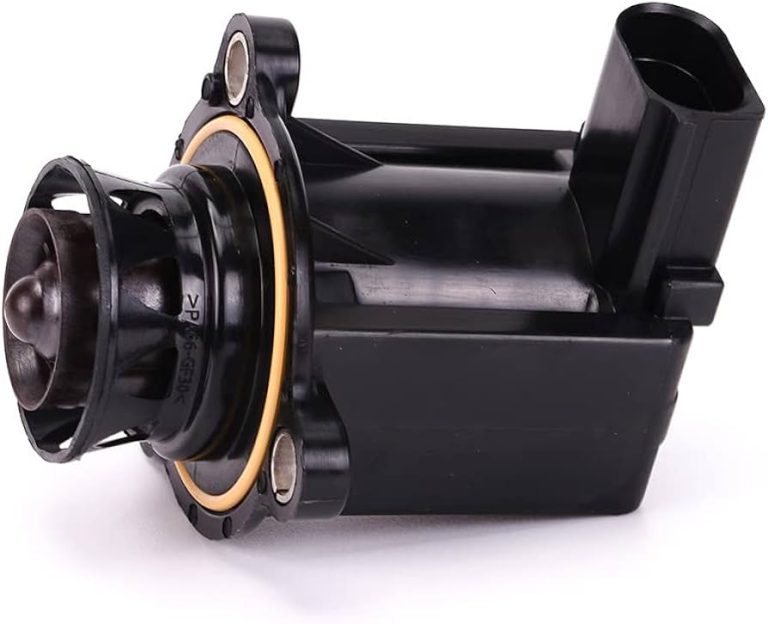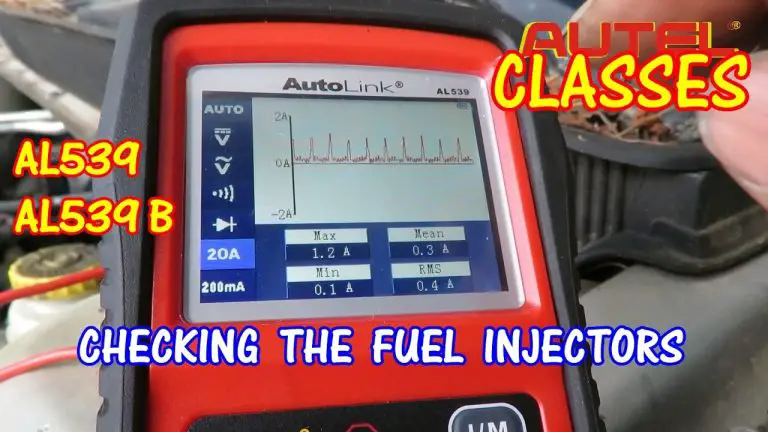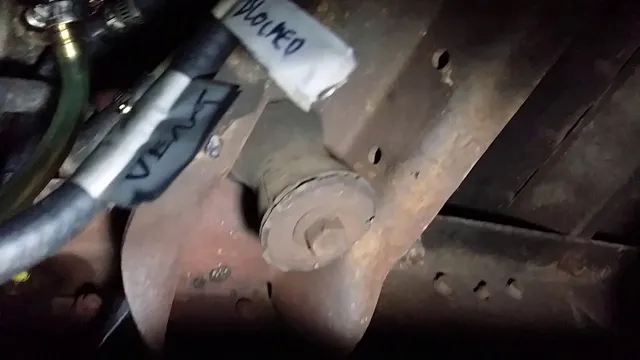How to Fix High Crankcase Pressure
High crankcase pressure in a vehicle can lead to various issues such as oil leaks, engine performance problems, and increased emissions. It is essential to identify and fix the root cause of the high crankcase pressure to ensure the proper functioning of the engine. In this article, we will discuss the common causes of high crankcase pressure and provide effective solutions to fix this issue.
What are some additional diagnostic tests that can be performed using crankcase pressure measuring?
Crankcase pressure measuring can provide valuable information for diagnosing engine issues. To further enhance diagnostic accuracy, there are several additional tests that can be performed using crankcase pressure measurements.
One such test is the leak-down test, which involves pressurizing the crankcase and monitoring the pressure drop over time. If there is a significant pressure drop, it suggests that there may be internal leaks within the engine, such as worn piston rings or cylinder head gasket failure.
Another diagnostic test that can be conducted is the PCV (Positive Crankcase Ventilation) system check. The PCV valve is responsible for regulating the flow of crankcase gases back into the intake manifold, preventing excessive pressure buildup. By measuring the crankcase pressure under different engine operating conditions, the effectiveness of the PCV system can be evaluated. If the pressure is consistently high, it may indicate a malfunctioning PCV valve or clogged ventilation hoses.
Furthermore, crankcase pressure measuring can be used to test the integrity of various engine seals, such as the valve cover gasket or rear main seal. By pressurizing the crankcase and monitoring for pressure drops, potential leaks can be detected. Any significant pressure drop would suggest that the seals may need to be replaced.
Additionally, crankcase pressure measurements can help diagnose turbocharger-related issues. In turbocharged engines, there is a crankcase ventilation hose that connects to the turbocharger inlet pipe. This hose vents crankcase vapors into the incoming airstream during boosted conditions. Testing the pressure in the crankcase while blocking this hose can reveal if there is excessive airflow through it, indicating a problem with the turbocharger or related components.
In summary, measuring crankcase pressure provides an opportunity for various diagnostic tests. These tests include leak-down tests to identify internal leaks, PCV system checks to assess the functionality of the ventilation system, monitoring for pressure drops to detect seal leaks, and evaluating the turbocharger system by measuring airflow through the crankcase ventilation hose.
What did the Valvetronic eccentric shaft data reveal about the engine’s idle speed?
Upon analyzing the Valvetronic eccentric shaft data, it was discovered that the position of the eccentric shaft was continuously shifting, resulting in an unstable and fluctuating engine speed. This observation gave rise to the crucial question of why the Digital Motor Electronics (DME) system was unable to effectively regulate the idle speed of the engine.
How can a pressure transducer and scope be used to measure crankcase pressure?
A pressure transducer, such as the Pico WPS500, along with a scope, can be useful tools for measuring crankcase pressure. By connecting the pressure transducer to the crankcase, it can accurately measure the pressure within the crankcase. The scope, when combined with the pressure transducer, allows for a visual representation of the pressure measurements.
This combination of tools can not only provide a precise measurement of the crankcase pressure, but it can also help identify pressure pulses that occur within the crankcase. These pressure pulses can be an indication of excessive cylinder wall to piston compression leakage, which escapes into the crankcase. The scope, in this case, allows for a visual display of these pressure pulses, offering a comprehensive view of the crankcase conditions.
By utilizing a pressure transducer and scope, automotive professionals can effectively monitor and analyze the crankcase pressure, identifying any potential issues related to cylinder wall to piston compression leakage. This information can be crucial in diagnosing and addressing engine problems, ensuring optimal performance and reliability.
How does the crankcase ventilation system change when a turbocharger is added to an engine?
When a turbocharger is added to an engine, the crankcase ventilation system undergoes notable changes. The primary reason for these changes is the alteration in the routing of crankcase blow-by gases, particularly when the engine is operating under boost pressure. This shift occurs due to the absence of manifold vacuum during this state.
Essentially, the crankcase ventilation system serves the purpose of managing and controlling the build-up of pressure, vapors, and by-products that occur within the engine’s crankcase. This system ensures that any excess gases and vapors accumulated in the crankcase are effectively vented to maintain optimal engine performance and efficiency.
With the addition of a turbocharger, which increases the intake air pressure and overall boost pressure within the engine, the dynamics of the crankcase ventilation system change accordingly. The lack of manifold vacuum under boost pressure alters the traditional routing of blow-by gases.
Typically, in naturally aspirated engines without a turbocharger, the crankcase ventilation system utilizes the intake manifold vacuum to draw blow-by gases from the crankcase into the engine’s intake system. However, with a turbocharger, the absence of manifold vacuum means an alternative route must be established for the crankcase gases.
To address this, a separate path known as a crankcase breather or oil separator is introduced to the system. This breather is designed to capture the blow-by gases and separate any oil vapors or contaminants before returning the gases to the intake system downstream of the turbocharger.
The separated oil vapors and contaminants are usually collected within a catch can, which needs periodic maintenance and cleaning to prevent any accumulation that could hinder the system’s efficiency. By incorporating this distinct path for blow-by gases, the crankcase ventilation system successfully circumvents the lack of manifold vacuum during engine boost, ensuring efficient evacuation of gases without compromising the engine’s performance.
In conclusion, the addition of a turbocharger to an engine necessitates changes to the crankcase ventilation system. These changes accommodate the altered routing of blow-by gases in the absence of manifold vacuum under boost pressure. By incorporating a separate breather and oil separator, the system effectively manages and expels the crankcase gases while maintaining optimal engine performance and efficiency.
What can happen if there are issues with the crankcase ventilation system?
Issues with the crankcase ventilation system can lead to a range of problems that are often overlooked or underestimated by automotive technicians. One of the key indicators of a malfunctioning crankcase ventilation system is the presence of excessive condensation in the crankcase, evident through milky deposits on the oil fill cap or inside the oil fill hole during an oil change.
However, the consequences of crankcase ventilation problems go beyond mere condensation. These issues can manifest as a “Check Engine” light concern, typically accompanied by fuel trim codes. The impact of such problems becomes more apparent when considering a real-life scenario involving a 2001 Chevy S-10 Blazer with a 4.3 VIN W engine. Despite the discovery and reconnection of a disconnected vacuum hose, the fuel trim values remained significantly high at idle, with each bank showing positive 24 percent.
To diagnose the root cause, various tests were performed. Firstly, the mass airflow sensor, a common culprit for skewed fuel trim values, was replaced, but without any improvement. To further investigate the issue, the crankcase air inlet hose was disconnected to observe changes in fuel trim values at idle, yet no significant differences were found. This revelation led to a crucial realization: the crankcase air supply is measured by the mass airflow sensor, and if unmeasured air is entering the crankcase due to a leak, the system will become fuel lean.
Another test involved connecting a vacuum gauge to the dipstick tube while blocking the PCV fresh air inlet at the valve cover with the engine idling. Surprisingly, very little vacuum was detected, suggesting the presence of an air leak into the crankcase. The problem became even more apparent when smoke was introduced into the crankcase, revealing an improperly installed valve cover gasket on the passenger side of the engine. Correcting this gasket issue resolved the high fuel trim values.
This real-world example illustrates how crankcase ventilation problems often lead to misdiagnoses and unnecessary replacement of parts. Many technicians overlook or fail to consider crankcase leaks as potential causes of fuel trim codes and neglect to measure crankcase pressure, ultimately causing avoidable complications.
In conclusion, when issues arise with the crankcase ventilation system, they can result in excessive condensation, “Check Engine” light concerns, and fuel trim codes. Neglecting to address these problems can lead to misdiagnoses, unnecessary part replacements, and overall inefficiencies in the operation of modern powertrain platforms. Proper attention to crankcase ventilation systems is crucial for maintaining optimal engine performance and avoiding perplexing complications.
How can problems with the crankcase ventilation system be detected?
Problems with the crankcase ventilation system can be detected through several indicators. One of the initial signs is the presence of excessive condensation inside the crankcase. This can be observed during an oil change when milky deposits are found on the oil fill cap or seen inside the oil fill hole. Another important indication of crankcase ventilation issues is the illumination of the “Check Engine” light. This is commonly manifested through fuel trim codes appearing, which are often related to the malfunctioning of the crankcase ventilation system. For instance, high fuel trim numbers at idle, such as positive 24 percent, can be a result of crankcase ventilation problems. It is worth mentioning that other related symptoms, such as disconnected vacuum hoses, can also point towards issues with the crankcase ventilation system.
How did the introduction of Positive Crankcase Ventilation (PCV) systems address the issues with the road draft tube system?
The introduction of Positive Crankcase Ventilation (PCV) systems aimed to address the issues associated with the road draft tube system. Prior to the implementation of PCV systems, the road draft tube was responsible for venting the crankcase gases to the atmosphere. However, this system had several drawbacks.
One of the main problems with the road draft tube system was its inefficiency when the vehicle was not in motion. When the car was stationary, there was no crankcase ventilation, which led to a buildup of blow-by gases and increased pressure within the engine. This could result in oil leakage and other potential engine problems.
On the other hand, at high speeds, the road draft tube system was too effective, causing excessive suction that drew oil out of the engine along with blow-by gases. This resulted in the formation of a black, oily residue on the roads.
Furthermore, the road draft tube system contributed to environmental pollution by releasing unburned hydrocarbons into the atmosphere, which contributed to smog formation, notably in areas such as the Los Angeles basin during the 1950s and 60s.
To address these issues, Positive Crankcase Ventilation (PCV) systems were introduced. PCV systems reroute the blow-by gases from the engine’s crankcase into the engine intake manifold, where they can be burned along with the incoming air/fuel mixture.
PCV systems operate on a vacuum-controlled mechanism, adjusting the flow of blow-by gases based on engine load. During low engine loads, when blow-by gases are minimal, there is less flow through the PCV system. However, under road load conditions, when blow-by increases, the system allows for greater flow to prevent pressure buildup in the crankcase.
By redirecting crankcase gases back into the engine for combustion, PCV systems effectively reduce the emission of unburned hydrocarbons into the atmosphere. This significantly improved air quality, particularly in areas prone to smog formation like the Los Angeles basin.
The introduction of PCV systems became mandatory in California in 1961, and by 1964, all new cars were equipped with this technology. This shift marked a significant improvement over the road draft tube system, addressing issues of oil leakage, environmental pollution, and overall engine performance.

Credit: m.youtube.com
Common Causes of High Crankcase Pressure
Before delving into the solutions, it’s important to understand the common causes of high crankcase pressure. Identifying the underlying issue will help in implementing the appropriate fix. Here are some typical reasons for high crankcase pressure:
- Worn Piston Rings: Over time, the piston rings can wear out, leading to increased blow-by gases entering the crankcase and causing high pressure.
- Clogged Positive Crankcase Ventilation (PCV) System: A clogged PCV system can disrupt the ventilation of the crankcase, resulting in pressure buildup.
- Engine Overheating: Excessive heat can lead to the expansion of gases in the crankcase, elevating the pressure levels.
- Faulty Cylinder Head Gasket: A damaged or worn-out cylinder head gasket can allow combustion gases to enter the crankcase, leading to increased pressure.
Solutions to Fix High Crankcase Pressure
Now that we have identified the common causes of high crankcase pressure, let’s explore the solutions to rectify this issue:
1. Replace Worn Piston Rings
Replacing worn piston rings is a crucial step in addressing high crankcase pressure. By ensuring proper seal and compression, new piston rings can prevent excessive blow-by gases from entering the crankcase. This fix will help reduce crankcase pressure and improve overall engine performance.
2. Clean Or Replace The Pcv System
A clogged PCV system can impede the ventilation of the crankcase, leading to pressure buildup. Cleaning or replacing the PCV valve and associated hoses can restore proper ventilation and alleviate high crankcase pressure.
3. Address Engine Overheating
Preventing engine overheating is essential to control crankcase pressure. Keep the cooling system well-maintained, ensure proper coolant levels, and address any issues related to the radiator, water pump, or thermostat. Maintaining optimal operating temperature will help minimize pressure buildup in the crankcase.
4. Replace Faulty Cylinder Head Gasket
If a faulty cylinder head gasket is identified as the cause of high crankcase pressure, replacing it is imperative. A new gasket will seal the combustion chambers and prevent the escape of gases into the crankcase, thereby reducing pressure levels.
Preventive Measures
While addressing high crankcase pressure is essential, taking preventive measures can help avoid this issue in the future. Regular maintenance, timely oil changes, and prompt attention to any signs of engine problems can contribute to preventing high crankcase pressure.
What were the problems with the old road draft tube system?
The old road draft tube system, prior to the implementation of Positive Crankcase Ventilation (PCV) systems, faced several issues. A major problem was the release of unburned hydrocarbons into the atmosphere. This had a significant impact on air quality, particularly evident in the high levels of smog experienced in the Los Angeles basin during the 1950s and ’60s.
To address this issue, California made PCV systems mandatory in 1961, which were then implemented in all new cars by 1964. PCV systems provided a solution by redirecting the combustion blow-by gases from the crankcase into the engine intake manifold. This allowed the unburned hydrocarbons to be thoroughly burned along with the incoming air/fuel mixture.
The PCV systems operated through a vacuum-controlled mechanism, resulting in lower flow during low engine loads when blow-by was less significant. Conversely, under road load conditions, when blow-by increased, greater flow was allowed to effectively burn off the excess hydrocarbons. This vacuum control feature ensured that the system operated optimally and minimized the release of unburned hydrocarbons into the atmosphere.
By addressing the problems of the previous road draft tube system, the implementation of PCV systems played a vital role in reducing air pollution and improving air quality, not only in California but also in other regions where similar emission concerns were present.
Let’s Know Crankcase Problem in BMW Models
Measuring crankcase pressures in BMW vehicles with Valvetronic intake valve lift control is of utmost importance due to several key reasons. Firstly, unlike many other vehicles, these particular BMW models feature a regulated intake manifold vacuum. This means that the target vacuum level for any BMW Valvetronic engine is set at a mere 50 millibar or approximately 1.5 inches of mercury.
The significance of this small amount of vacuum lies in the fact that it allows for the close regulation of crankcase pressure. Any fluctuations in crankcase pressure can have a substantial impact on the overall performance and functioning of these engines, particularly at idle.
By measuring crankcase pressures, technicians can obtain valuable information regarding the health and operation of the engine. Deviations from the desired levels of crankcase pressure can be early indicators of potential driveability issues. Identifying and addressing these problems promptly is crucial in order to ensure optimal engine performance and prevent potential damage or further complications.
Therefore, the measurement of crankcase pressures in BMW vehicles with Valvetronic intake valve lift control is vital for diagnosing and resolving any driveability problems that may arise, ultimately allowing for the engines to run smoothly and efficiently.
What was the solution to the problem in the BMW 335xi?
The solution to the problem in the BMW 335xi involved replacing the valve cover with a new part. This valve cover is crucial as it contains a majority of the components that make up the crankcase ventilation system. By replacing the valve cover, the issue was effectively resolved, ensuring optimal functioning of the vehicle’s crankcase ventilation system.
How was the crankcase ventilation system in the BMW 335xi affected by the issue?
The crankcase ventilation system in the BMW 335xi was affected by the issue in the following way:
The pressure measurement showed that the pressure in the crankcase was too high, indicating a leak. The source of this leak was identified as the crankcase ventilation hose that connects to the turbocharger inlet pipe. This hose is downstream from the mass airflow sensor and allows airflow to be measured by the MAF.
Upon further investigation, it was observed that removing the breather hose at the valve cover and plugging the hole caused a significant decrease in crankcase pressure. This confirms that the issue lies within the crankcase ventilation system.
The purpose of the hose connection in question is to vent crankcase vapors into the incoming airstream, specifically during engine operation under boosted conditions. It should be noted that at idle, there should be no airflow through this tube.
A BMW training book’s crankcase ventilation diagram illustrates the normal operation of the system under different load and boost conditions. Item number 12 in the diagram is a non-return valve, which is supposed to remain closed, but in this case, it was found to be stuck open.
Therefore, the malfunctioning non-return valve in the crankcase ventilation system is causing the abnormal pressure readings in the crankcase, leading to the issue at hand.
What did the crankcase pressure test reveal about the 2011 BMW 335xi?
The crankcase pressure test conducted on the 2011 BMW 335xi revealed a high pressure reading of -7 inches of water (-17 millibar), indicating the presence of a leak into the crankcase. This finding suggests that there may be a problem with the crankcase ventilation system. The crankcase ventilation hose, which connects to the turbocharger inlet pipe downstream from the mass airflow sensor, was specifically highlighted in Figure 15 as a potential source of the leak. To further diagnose the issue, it is recommended to check for air leaks before inspecting the crankcase ventilation system, as mentioned in the scan tool test plan for this specific error code. Figure 16 may provide additional details and guidance on the steps to follow during this diagnostic process.
What codes were associated with the intake pipe absolute pressure issue in the BMW 335xi?
The codes that were associated with the intake pipe absolute pressure issue in the BMW 335xi were P112F (generic code) and 28A0 (BMW-specific code). The generic code P112F indicates an issue with the intake pipe absolute pressure, while the BMW code 28A0 specifically refers to the plausibility or high pressure problem related to the intake pipe in the BMW 335xi.
What was the result of replacing the damaged crankshaft seal in the BMW X-3?
After the crankshaft seal was replaced in the BMW X-3, the engine functioned normally. However, it is worth noting that the issue with the oxygen sensor heater was not addressed. Despite this, the customer reached a point where they decided to forgo further repairs and were informed about the potential risk of catastrophic engine failure if any remaining drive belt material was left inside. Consequently, they opted to trade in the vehicle.
What was the result of replacing the damaged crankshaft seal in the BMW X-3?
After the crankshaft seal was replaced in the BMW X-3, the engine functioned normally. However, it is worth noting that the issue with the oxygen sensor heater was not addressed. Despite this, the customer reached a point where they decided to forgo further repairs and were informed about the potential risk of catastrophic engine failure if any remaining drive belt material was left inside. Consequently, they opted to trade in the vehicle.
What was the cause of the air leak in the BMW X-3?
Based on the provided information, the cause of the air leak in the BMW X-3 was identified as a faulty crankshaft seal. The issue with the oxygen sensor heater was not addressed, but after replacing the crankshaft seal, the engine operated normally. However, it was advised that there might be additional drive belt material still inside the engine, which could potentially lead to a catastrophic failure. Consequently, the customer decided to trade in the vehicle, presumably to avoid any potential risk or further complications.
How was the crankcase pressure measured in the BMW X-3?
In order to determine the cause of the engine speed surges in the BMW X-3, the technician decided to investigate the crankcase pressure. This measurement is crucial in understanding whether there is an over-pressure condition or if air is leaking into the crankcase.
To measure the crankcase pressure, the technician utilized a specific testing technique. They connected a gauge or sensor to the engine’s crankcase and recorded the pressure readings. The readings were expressed in units such as inches of water column or millibar.
In this particular case, the recorded crankcase pressure readings fluctuated between -2.5 to 4 inches of water column (-7 to 10 millibar). These values were well below the expected specification for this engine, which is typically around -30 millibar with a tolerance of plus or minus 5 millibar. The fluctuating readings indicated that something was amiss with the crankcase pressure.
The technician deduced that such a pressure fluctuation could lead to false air entering the engine crankcase, which isn’t accounted for by the mass airflow sensor. To further investigate this, a smoke machine was connected to the same test fitting that was used for measuring the crankcase pressure. The presence of smoke behind the engine crankshaft pulley confirmed the suspicion of a leak in that area.
Upon examination, it was discovered that the front crankshaft seal had been damaged due to a recent serpentine drive belt failure, a known issue with these BMW platforms. However, this information had not been initially communicated to the technician. After replacing the damaged crankshaft seal, the engine returned to normal operation, even though the issue with the oxygen sensor heater remained unresolved.
By measuring the crankcase pressure and subsequently identifying and addressing the source of the leak, the technician was able to rectify the problem causing the engine speed surges in the BMW X-3.
What codes were set in the engine control system of the BMW X-3?
In the engine control system of the BMW X-3, several codes were set after performing a Valvetronic limit learn procedure. Upon starting the engine and allowing it to idle for several minutes, there was no improvement in engine idle performance and the codes quickly reset.
Analyzing the Valvetronic eccentric shaft data revealed that the eccentric shaft position was fluctuating, which is known to cause surges in engine speed. This raises the question of why the Digital Motor Electronics (DME) system is unable to effectively control the idle speed.
While an air leak could potentially affect idle speed control, the first step taken before inspecting the intake system for leaks was to measure the crankcase pressure. Unfortunately, the measurement test resulted in failure. The crankcase pressure was observed to vary between -2.5 to 4 inches of water column (-7 to 10 millibar), which falls well below the specified range for this engine of -30 millibar, plus or minus 5 millibar.
This deviation in crankcase pressure indicates an over-pressure condition, suggesting the likelihood of air leakages into the crankcase. Further investigation may be required to pinpoint the exact cause of the vacuum loss and address it accordingly.
What are some potential problems related to crankcase pressure in BMW Valvetronic engines?
Crankcase pressure issues can arise in BMW Valvetronic engines, causing various problems with their performance. One common concern is related to the regulated intake manifold vacuum on these vehicles. Unlike many other cars, BMWs with Valvetronic intake valve lift control maintain a target vacuum level of only 50 millibar, equivalent to about 1.5 inches of mercury. This low vacuum level means that crankcase pressure needs to be carefully regulated, as it can greatly impact engine operation, particularly at idle.
It is important to note that the BMW Technical Service Bulletin (TSB) primarily focuses on excessive pressure or a lack of vacuum in the crankcase, which suggests the presence of a leak. However, it is also possible to encounter issues related to excessive vacuum. For instance, certain engine faults can trigger the throttle control mode and increase the intake manifold vacuum levels to resemble those of conventional engines. Unfortunately, the crankcase ventilation system in BMW Valvetronic engines is not designed to handle high manifold vacuum, resulting in significantly increased negative pressure within the crankcase.
If you come across difficulties in removing the oil fill cap while the engine is running or notice a high-pitched whistle during engine operation, it is crucial to investigate for faults that may interfere with the normal functioning of Valvetronic. These issues could be preventing the engine from operating properly and causing abnormal levels of crankcase pressure.
How long does it take for the crankcase pressure to return to atmospheric after the engine is shut off in a BMW X-5 with the N55 engine?
The crankcase of a BMW X-5 with the N55 engine demonstrates exceptional sealing capabilities, as it takes an impressive 75 seconds for the pressure to fully normalize and return to atmospheric levels after the engine is shut off. This prolonged duration emphasizes the tightly sealed nature of the crankcase, ensuring minimal air leakage and optimal performance.
What tool can be used to measure crankcase pressure on European cars and BMW vehicles?
A reliable tool that can be used to measure crankcase pressure on European cars, including BMW vehicles, is the Dwyer series 475 digital handheld manometer. This handy device accurately measures the pressure in inches of water column, which can be easily converted to millibar, the specified unit of measurement by BMW. To perform the measurement, an adapter can be utilized, such as the one offered by AGA tools, or one can be created by repurposing an old oil cap.
FAQ:
What Causes High Crankcase Pressure In Engines?
Crankcase pressure can be caused by worn piston rings, clogged filters, or excessive blowby.
How Does High Crankcase Pressure Affect Engine Performance?
High crankcase pressure can lead to oil leaks, loss of power, and damage to engine components.
Can A Clogged Pcv Valve Cause High Crankcase Pressure?
Yes, a clogged PCV valve can restrict airflow, leading to increased crankcase pressure.
What Are The Signs Of High Crankcase Pressure In A Vehicle?
Signs include excessive oil consumption, smoke from the exhaust, and loss of engine power.
Conclusion
High crankcase pressure can have detrimental effects on the engine’s performance and longevity. By identifying the root causes and implementing the appropriate solutions, vehicle owners can rectify this issue and ensure the optimal functioning of the engine. Additionally, preventive measures play a crucial role in avoiding high crankcase pressure in the future, emphasizing the significance of regular maintenance and proactive troubleshooting.







